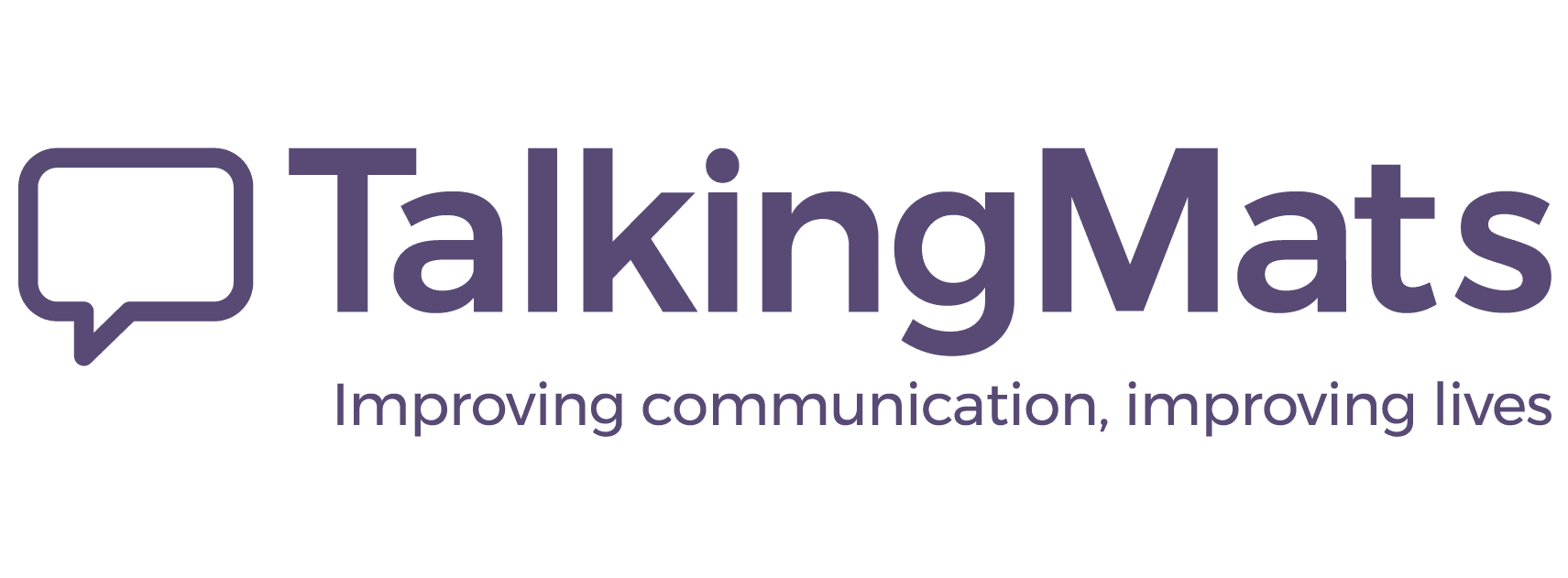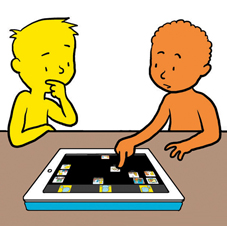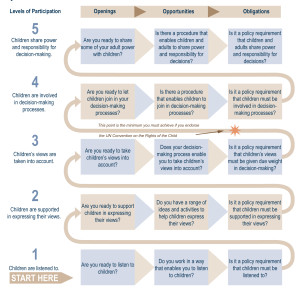I’ve been thinking about the advantages and risks of social media after Talking Mats recently reached 10K Twitter followers.
We (and by we I really mean my co-director, Lois, who had the vision – and at times the addiction! -to embrace and develop social media for Talking Mats) have worked hard at engaging with people who have a similar ethos as us i.e. to support and improve the lives of people with communication disabilities. We have linked with people who could teach us new ways of looking at the world we work in and with whom we could share our ideas. We realised that social media is a powerful tool to connect with like-minded people across the world. In combination with Twitter and Facebook we write regular blogs illustrating relevant- and at times fun – issues from our work. We hope our website is seen as a rich resource of information for anyone interested in communication.
However, I recently listened to a TED talk given by Wael Ghonim. He spoke about how in 2011 his use of social media helped spark the Arab Spring when he set up a Facebook page which attracted tens of thousands of followers and became a place for crowdsourcing and sharing. However, his initial euphoria turned to despair as the revolution turned ugly and the social media he was involved with also turned unpleasant. He describes what he now believes are 5 main problems with the direction that social media has taken.
- Social media can spread rumours that become seen as truth
- Social media can result in ‘echo-chambers’ – we only communicate with people we agree with
- Social media can quickly shift from discussion to disagreement and anger
- Social media encourages us to make statements (as a result of having only 140 characters) rather than ask questions about complex issues. Everyone can read these statements and we feel we need to defend them
- Broadcasting becomes more important than engagement; shallow comments become more important than discussion; we talk AT people rather than WITH each other; we become obsessed with numbers of posts and followers rather than with the quality of the discussion and who follows us.
He concluded his talk by suggesting that we need to develop social media protocols to create civility and respect and reasoned argument e.g. get credit for the number of people whose mind you change. I found his arguments compelling and uncomfortable – I do recognise Wael Ghonim’s ‘problems’ when I venture into other areas on social media such as politics.
However, this has not been our experience and we are reassured that in the social media world of communication disability people are civil, respectful and generous. We at Talking Mats like to think that we are using social media as a forum for engagement, thoughtfulness, quality discussions, learning new ideas and developing understanding without hostility, anger and shallowness..
And long may this continue…..
One of the issues which has emerged from previous Talking Mats and dementia projects is that many people with dementia experience difficulties with mealtimes and that it can affect people at any stage of dementia.
Mealtimes involve two of our most fundamental human needs, the basic physiological requirements for food and drink and interpersonal involvement. Mealtimes are particularly important for people with dementia as they may develop difficulties both with eating as a source of nourishment and with the social aspects of mealtimes.
In 2015 Joan Murphy and James McKillop carried out a project, funded by the Miss EC Hendry Charitable Trust, to gather information from the first-hand experience of people with dementia about their views about mealtimes. We ran three focus groups and used the Talking Mats Eating and Drinking Resource to allow participants to reflect, express and share their views.
Findings:
The people who took part in this study felt that there were significant changes in their eating and drinking since their diagnosis of dementia. For some, their experience of mealtimes had changed and several said that they now skip breakfast and sometimes lunch. For some this seemed to be related to forgetting to eat and drink, for others it related to changes in taste whereas for others these meals seemed to be simply less important. Forgetting to eat was particularly noted by the participants with dementia and confirmed by their spouses.
The social aspect of eating and drinking also changed for many of the participants and, given the importance of social engagement for quality of life it is important to be aware of the effects of changes in eating and drinking on mealtime dynamics. For some it may be that they are now less interested in the social aspect of eating with others at home. Others found it hard to eat out because of distractions and lack of familiarity while some felt embarrassed about eating out in front of strangers. Others still really enjoyed going out for meals but added that they preferred to go somewhere well-known to them. The shared mealtime may be a particularly crucial opportunity for social engagement as it plays a central role in our daily lives. Social relationships are central for not only enhancing quality of life, but also for preventing ill health and decreasing mortality (Maher, 2013).
Almost all the participants talked about how their taste had changed both for food and drink which in turn affected their appetite. Some families had overcome the problem of lack of taste by going for more strongly flavoured food. When asked specifically about drinking, thirst was noted as a significant change since diagnosis
Their feelings about the texture of food did not appear to have changed significantly and was simply a matter of preference.
Three additional health issues which the participants felt were connected with eating and drinking were poorer energy levels than before their diagnosis, reduction in ability to concentrate and changes in sleep patterns.
For a copy of the full report please click here Dementia and Mealtimes – final report 2015
Get your New Year’s resolution Talking Mat here!
Talking Mats is a social enterprise whose vision is to improve the lives of people with communication difficulties. 2015 has been another exciting year for us. We have had great opportunities to work with a fantastic range of people and hear great stories: from wee ones in nurseries using Talking Mats to encourage active participation and decision making, to older people and their families through our dementia family training project. It is our core belief that good communication is fundamental to a quality service. Making sure there is space for active listening to views and concerns particularly, if individuals have difficulties communicating is central to effective interactions and individualised, person centered care. We are really grateful to all the people who have supported the work of Talking Mats; people with communication support needs, staff who work with them and organisations that we are privileged to work with on a consultancy basis.
It will not surprise you to know that as an organisation we like to set goals and then go for them so as our thank you to you all for your continued support , we have created our very own New Year’s resolution Talking Mats;
• What are you definitely going to go for ?
• What is in the maybe pile – or that could be for those things you are already doing and will continue
• What is not a goal for you in 2016 .
• Don’t forget to use the blanks to personalize it further!
• Plus take a photo so you can reflect back on where 2016 takes you and whether you achieved your goals .
So open and download it , cut it up and we hope you enjoy using the resolution Talking Mat with friends and family ! resolution pics
We wish you all every health and happiness from all in the Talking Mats team
Fika (coffee time) in the Talking Mats office is always interesting. Recently we got chatting about Christmas preparations and who had the longest ‘to do’ list. There was a definite variation in enthusiasm for all things Christmas. We needed to do a Talking Mat! This was done on our digital Talking Mats – it’s easy to import your own images now and make a digital Talking Mat about any topic.
Eating , drinking and games and puzzles got the thumbs up! (Lois is the games queen and was the most enthusiastic about that).
Holiday, partying and entertaining got consensus.
Extended family coming to stay? This moved around a bit, but was generally positive (say no more!)
Shopping was in the mid section-we all agreed. Perhaps by now it would be less positive with last minute mayhem.
Gifts was added as a blank (how could the interviewer forget that) and not everyone was comfortable about the commercialisation of Christmas.
‘How do you feel about Juggling demands?’ We all agreed -not sure. Again remember, Talking Mats is how a person feels at a certain point in time. Ask us again on Christmas Eve?!
Christmas cleaning? All agreed was a chore and some thought best not to get too bothered about it
Talking Mats supports a group conversation. We all got our say
Merry Christmas one and all
We are delighted that Nick Stewart, Director, Software and Products with Arum Systems, the IT Consultancy who have built the Digital Talking Mats has chosen TM as his favourite project for a case study.
Here is an extract from his case study describing the Challenge and Process of working with Talking Mats.
The Challenge
The challenge was taking the existing physical Talking Mats tool and building a digital application suitable for multiple platforms, while maintaining the core ethos of the tool. A significant amount of academic research went into creating the physical product and those principles had to be present in a digital version. The applications had to be extremely intuitive to use and enable better conversations for people with communication difficulties.
The aim was to create 3 digital versions; a browser based version for laptop users and a tablet version for iPad users and Android users. Each application would connect to a cloud server, allowing users to log in from any device, and the tablet versions would allow offline working through syncing with the cloud when a connection was available. There was a requirement to set up a multi-tiered subscription based user account system to match the intended charging model for the digital app.
Our Process
Arum’s approach was to totally immerse ourselves in the Talking Mats business to understand their goals, ethos and objectives. We took time to learn how the Talking Mats ecosystem worked and how they wanted to engage with their customers. By applying our 3D Methodology we were able to break down the deliverables into phases allowing the key building blocks to be delivered first. This also allowed the best use of budget and reduced the time to market the new product.
To read the full case study click here Arum Talking Mats Case Study
We are grateful to Emma Atkiss, one of our accredited trainers for this interesting report.
The purpose of The Voice of the Child pilot project carried out by the Wigan Pathfinder team was to obtain pupil views using a viable tool. The team selected Talking Mats as a framework to support pupils to express their views in decisions regarding their lives. They were working on the principle that engaging with the young person and his/her family would lead to better outcomes
The project team considered that Talking Mats met the 5 criteria of Shier’s model of participation (2001)
- Children are listened to.
- Children are supported in expressing their views.
- Children’s views are taken into account.
- Children are involved in the decision-making processes.
- Children share power and responsibility for decision-making.
Click on diagram to enlarge.
The pupils in the pilot ranged from 7 to 17 years with a range of disabilities. During the pupil interviews the team found that the Talking Mats Health and Well being resource provided a practical framework for decision making and target setting
Talking mats provided :
- An objective, neutral space – a thinking tool- ‘Children and young people are able to consider their priorities when setting targets’.
- Opportunities for change – ‘Children and young people are able to make changes to their initial thoughts and have time to decide and reconsider options’.
- A truly person centred approach
- It was fun!
For example : A seven year old child with Autistic Spectrum Disorder identified both her cognitive strengths and areas for development using the Learning and Thinking domain. She provided feedback regarding her difficulty in attending when faced with too much information or choice and also her strength in planning skills. Thinking skills targets and interventions can be developed using this information as a starting point.
Their report states that the information gained from Talking Mats can be used, as part of the Education Health and Care planning and review cycle, to inform both decision-making and goal setting for children and young people i.e. It identifies strengths; It identifies areas to develop; It identifies the child / young person’s response to a range of experiences; It informs day-to-day decision-making ; It informs both targets and interventions for Individual Education Plans and it supports transition planning.
Ref : Engaging the voice of the child / young person at an individual level – Emma Atkiss,Senior Educational Psychologist and Caroline Gomez, Educational Psychologist, Wigan council
The transition from children’s to adult health services for young people with exceptional needs and their families is complex, multifaceted and fraught with concerns and fears. CEN Scotland commissioned Talking Mats to carry out a study to collect the views of 10 young people and their families who are experiencing this transition in Scotland.
The families in the project have given us clear views about their problems and fears and also some thoughtful suggestions for what could be made better. It is often in making small changes that significant improvement can occur. These suggestions include:
- Courses for parents on transition
- More specialist nurses e.g. transition nurses, acute liaison learning disability nurses
- Start preparing early – at least 2 years
- Transition wards for young people
- Training for doctors and nurses about complex needs
- More respite, not less
- Emotional support for parents
- Longer appointment times
- A hotline to GPs
This study captures the complexity and variation of transition health services for young people with complex health needs from the perspective of both the young person and their parents. Despite the problems and fears we also saw evidence of good practice and suggestions, such as those above, which give hope for the way ahead.
To read the full report, including a moving case study, and direct comments from families, please click here CEN Transition Report
.
The Keeping Safe Talking Mats resource is a visual framework that has been developed and trialled over 3 years. It provides:
- A listening space for people with learning disability to raise concerns
- A structure for staff to find out what people are thinking about their lives, and raise issues that can be difficult to discuss.
We have produced a poster that describes the development of the resource and where we have got to . Please click here to view CM poster 20150825
The Scottish government learning disability strategy keys to life has 4 strategic outcomes for people with learning disability in 2015-2017
- A health life
- Choice and control
- Independence
- Active Citzenship
Using the Keeping safe resource allows people to think about , reflect on and have their say in these areas. We have loved training staff working in learning disability across Scotland to use it. The feedback on how it is being used is very powerful, so watch out for more blogs that will show how it has helped people with a learning disability have a say in changing and determining their lives.
To help us meet the growing demands of our social enterprise we are a looking to recruit another associate to join the team. This person can be part time but no less than 3 days a week.
The key roles are:
- To work with the Talking Mats team to provide high quality training throughout the UK and occasionally abroad
- To be involved in developing and carrying out consultancy and project work
- To contribute to developing and taking products to market
- To increase sales and promote Talking Mats
- To contribute, as agreed, to the day-to-day running of Talking Mats Limited
Salary offered will depend on skills, experience and what you bring to Talking Mats. The range offered will be between £25,000 to £35,000. For detailed job description and person specification click here 20151007 TM Associate job description
The closing date for applications is noon on Wednesday 28th October and the date for interviews will be Thursday 5th November
If you are interested and think you would like to join our dynamic team please send a cover letter with your CV to joan@talkingmats.com or lois@talkingmats.com. Also, don’t hesitate to get in touch if you need any other information either by email or phone us on 01786 479511

- This tool will be useful in helping some residents make decisions, informed choices and express their needs. It will take time for some residents to feel confident in using this tool.
- I’d like to use it with some residents to be able to adapt Talking Mats more to their understanding.
- I’d like to use this tool for resident’s reviews to find out what the residents likes/dislikes are.
- Talking Mats will be great for service evaluation.
- Talking Mats will be great for asking residents about things they want to do.
- Updating Care Plans regularly from outcomes of Talking Mats.
- It can be used to get to know people’s needs and wishes more.
- Share the findings with colleagues and joint services.
- Hopefully through its use I’ll learn to pass it onto others.
- A gardening set. Service evaluation and well-being assessing stress levels/anxiety/emotional state?
- I’d use it to promote choices of activities.
- Care Inspectorate forms. Finding out how people enjoy time at the service and how to improve on it.
Can you let us know how you use Talking Mats as part of your work?
 Online training login
Online training login 





